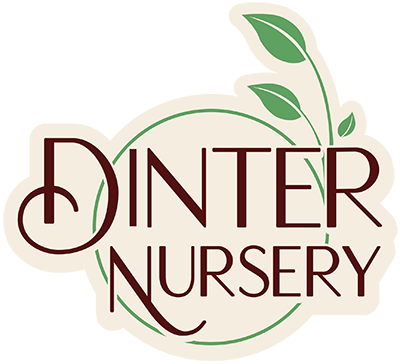Companion Planting and Attracting Beneficial Insects to Your Garden
Companion planting is a great way to encourage the health of your garden. There are certain plants that, when planted together, will protect each other by attracting pollinators, repelling pests, and increasing plant productivity. One obvious benefit of this is the reduction of pesticides in the garden, as even organic pesticides can be toxic to bees and other pollinators.
We just love pollinators, don’t you?
Besides companion planting, we can also practice crop rotation, use row covers, and trap and handpick pests to attract pollinators and other beneficial insects. If, as a last resort, we have to use a pesticide, we recommend to always try to choose a pest-specific one, such as BT for caterpillars. To protect pollinators, do not use pesticides on open blossoms. If using a broadcast spray, beneficial insects can be collateral damage and the damaging bugs can return in force, so be specific when spraying.
Creating a diverse garden by planting various heights and shapes of flowers and plants will attract pollinators and beneficials from spring through to fall. Create a nesting habitat by leaving areas with dry grasses, a small brush pile, some dead wood, and a muddy area. All of these things provide essential nesting and over-wintering material for bees and insects.
We also recommend planting as many flowers as vegetables for a healthy population of pollinators. Weave clusters of old fashioned open pollinated flowers in and around your fruits and vegetables. Some plants, such as tomatoes, can be self-pollinating. For plants like these, companion planting can be used to repel damaging insects.
Marigolds are one of the most effective repellents for bad bugs and can be interplanted with your garden vegetables. Other flowering friends for vegetable gardens include: alyssum, bachelor's button, bee balm (monarda), nasturtiums, California poppy, phacelia, calendula, cosmos, and cleome.
Leaving some herbs to bloom in the garden also attracts both beneficials and pollinators. Particularly effective are basil, thyme, hyssop, dill, and oregano. Catnip repels flea beetles, so plant close to peas and beans. Borage repels tomato worms.
Companion planting is about creating plant communities that have mutual benefits to each other. With some planning, we can create a healthy garden that provides us with food and joy. What could be better than that?
| Plant Name | Plant Close to | Keep away from |
|---|---|---|
| Beets | Brassicas, onions, kohlrabi | Field mustard, pole beans |
| Borage | Squash, Strawberries, tomatoes | |
| Broccoli | Beets, chamomile, dill, hyssop, mint, nastursiums, herbs | Strawberries |
| Bush Beans | Beets, cabbage, carrots | fennel, garlic, onions |
| Cabbage, Cauliflower | Celery, chard, spinach, (tomatoes and celery repel cabbage worms) | Strawberries |
| Carrots | Cabbage, chives, leeks, lettuce, onions, peas. Onions, leeks, and wormwood repel carrot rust files. | |
| Chives | Apples, berries, carrots, peas. Chives deter aphids and Japanese beetles. | |
| Corn | Beans, cucumbers, melons, peas, pumpkins, squash | |
| Cucumbers | Beans, cabbage, corn, radishes, sunflowers | |
| Dill | Brassicas | Carrots |
| Eggplant | Green beans, peppers,tomatoes | |
| Fennel | Plant outside the veggie garden. | Not a good companion plant for any vegetable. |
| Garlic | Cabbage, cane fruits, roses. | Peas, beans |
| Kale | Aromatic herbs, cabbage family, marigolds, nastursiums | Pole beans, strawberries |
| Kohlrabi | Cabbage/cauliflower family | Tomatoes, fennel, polebeans |
| Lettuce | Beets, carrots, parsnip | Cabbage family |
| Marigolds | Plant everywhere! Marigolds stimulate vegetable growth, deter bean beetles, aphids, squash bugs. | |
| Mint | Deters flea beetles. Spreads enthusiastically so best planted in a pot. | |
| Nastursiums | Beans, greenhouse crops, potatoes, pumpkins, squash. Repels aphids, potato bugs, squash bugs, and white flies in greenhouses. | |
| Onions | Beets, cabbage family, carrots, lettuce, parsnips | Beans, peas |
| Parsley | Corn, roses, tomatoes. Provides food for swallowtail butterfly caterpillars | |
| Parsnips | Onions, radishes | |
| Peas | Beans, carrots, corn, cukes | Garlic, leeks, onions |
| Peppers | Basil, carrots, eggplant, onions | Fennel, kohlrabi |
| Pole Beans | Corn, marigolds, radishes | onions, garlic beets |
| Potatoes | Basil, beans, corn, eggplant, marigolds, peas, squash | Cucumbers, pumpkins, raspberries, sunflowers |
| Rosemary | Beans, cabbage, carrots | |
| Sage | Carrots, cabbage family | Cucumbers |
| Spinach | Celery, cauliflower, eggplant | |
| Strawberries | Borage, bush beans, lettuce, spinach | Cabbage family |
| Sunflowers | Cucumbers, sunflowers can provide trellis for and shade for cucumbers. | Potatoes |
| Swiss Chard | Bush beans, onions, kohlrabi | Pole beans |
| Thyme | All garden crops, deters cabbage moths | |
| Tomatoes | Asparagus, basil, cabbage family | Fennel, potatoes |
| Turnips | Carrots, parsley, onions, sage | Kohlrabi |

